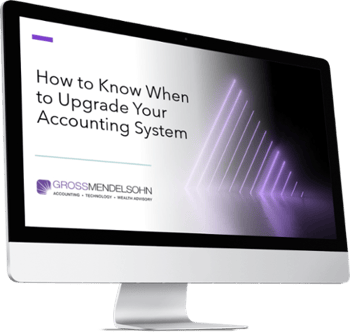In any economy, there are only two ways to increase the bottom line: increase revenue and/or decrease costs. Electronic Data Interchange (EDI) is a tool that can help with both. By eliminating operational bottlenecks, EDI helps lower costs while allowing manufacturers and distributors, to focus on strategic objectives, including revenue growth opportunities like taking on a new customer.
Let's dive into what EDI is, how you can obtain EDI software and a real-life EDI implementation success story.
What Exactly Is EDI?
The concept of EDI has been around for quite a while. According to datainterchange.com, EDI has been around since the 1960s, when Ed Guilbert developed a form of electronic communication between shipment supply chains in the U.S. Army. In the 1990s, the integration between EDI and enterprise resource planning (ERP) financial systems began. As you can imagine, the integrations in place today are very mature and sophisticated and can be a tremendous timesaver for your business.
At a high level, EDI allows organizations to exchange business documents between dissimilar systems such as purchase orders, invoices, shipment notifications and more. This occurs electronically versus the traditional, manual and error-prone methods like email, phone or fax.
One of the beauties of EDI is, once set up, configured and integrated into your ERP software, there is no manual intervention required for an order to flow through your supply chain from beginning to end, other than dealing with exceptions. In addition, the computer doesn’t make coding errors, so hiccups are virtually eliminated.
How Do I Obtain EDI Software?
No matter what ERP software you currently use to process your finance and operations, be it QuickBooks, NetSuite or otherwise, you will likely need to purchase separate EDI software from an EDI software vendor. A few popular EDI vendors are TrueCommerce, SPS Commerce and EDISoft. All three products have EDI functionality and have ties to various financial/ERP software.
No matter what EDI software you are looking at, ensure it has a known, working integration with your financial software. Also, as with any software purchase, we highly suggest doing your due diligence by talking to satisfied product users. It is crucial that the references you speak with use the same financial product as you do (i.e., NetSuite, QuickBooks, etc.).
Once the EDI software is in place, the real magic happens by tying the EDI software into your ERP or financial system, which runs your orders, inventory and purchasing. Once the two are connected, purchase orders from your customers can flow into your ERP/financial system automatically, without user intervention, and without the need to rekey anything—eliminating the possibility of human error.
Your customer's purchase order flows in from EDI electronically, respecting the customer's unique pricing, and via the EDI link, the purchase order automatically becomes a sales order in your financial system, with all the appropriate items and pricing.
What happens from there is up to you. EDI can handle everything from the order coming in, notifying the warehouse of the order (even if a third-party warehouse) and informing the customer that the goods have shipped, to the invoice going out to your customer and receiving payment.
If you use EDI to track incoming purchase order receipts, it can automatically pull in receipt information, such as quantities received of each item, along with other details like item serial numbers or expiration dates.
If you think about the time saved in all these different areas, you can see where the labor and operational cost savings come from, along with the revenue possibilities. Automating all these areas allows you to reduce costs while taking on new customers easily, given the fully automated process in place.
A Real Life Example of the Benefits of EDI
We've helped several clients set up EDI systems and connected them to their financial systems using some of the products mentioned previously. Most recently, we helped implement an integrated EDI system with one of our customers that sells to food chains and other large retail stores, including Walmart. Keep in mind that several customers may require that you have an EDI system in place to conduct business with them.
Our client supplies flour, corn meal and similar products to a store near you, like Giant Food. During phase one, we helped them move from an industry-specific financial and operational system to NetSuite. During phase two, the goal was to integrate their EDI, TrueCommerce, into NetSuite to reap the full benefits of integrated EDI.
Before moving to NetSuite, the customer was already using TrueCommerce for EDI, but it was not integrated into their previous order system. Once we moved to NetSuite, we told them we were going to reap the benefits of integrating True Commerce EDI into NetSuite.
For example, before this change, the person who worked on Walmart orders would spend a good part of a day reentering those orders into their order system when the purchase orders came in from Walmart. They would go into the EDI interface, pull up the purchase orders from Walmart, print them out and manually enter the order into their accounting system. The goal was to eliminate any keying of data and have the process fully automated, so the purchase order would flow in from True Commerce EDI and become an order in NetSuite automatically.
Prior to the integration, the same person would need to manually go to another website for their third-party warehouse and spend a few more hours rekeying the orders again for processing from the third-party warehouse. So, our objective was to use EDI to send that information automatically from NetSuite, and once the order was approved for shipment in NetSuite, to the third-party warehouse.
All shipment and invoice information before was manually keyed into the accounting system and then keyed into TrueCommerce, to invoice Walmart through EDI. Our goal was to automate all of this.
The Result — Complete Automation!
Today, NetSuite is fully implemented, and TrueCommerce EDI is also fully integrated into NetSuite. The person who previously keyed in the different pieces of information no longer does that manual work. TrueCommerce EDI runs on a schedule every hour, pulling in the purchase orders from all customers. The system then automatically transfers the purchase orders from the EDI system to an unapproved order in NetSuite—this process happens in a matter of seconds.
Once the order is approved for processing in NetSuite, which is a few clicks, it's sent via EDI automatically without rekey to the warehouse for processing. A notification is sent to the customer once the shipment is complete and the information updates within NetSuite. After the order has fully shipped and is ready for invoicing, it's invoiced in NetSuite and goes automatically to the appropriate customer for payment via EDI. Nothing is mailed to the customer, as the entire process happens electronically.
As you can see, the overall operational efficiencies achieved, and the time saved from a fully-integrated EDI system acting as your virtual assistant are unparalleled. This automated process leaves opportunities for the company to focus on strategic goals, such as the ability to take on new revenue streams or new customers, all with a solid system in place to do so.
Need Help?
If you have any questions regarding NetSuite or EDI, contact us here or call 800.899.4623 for help.


